Travel/ Bike Travel
Motorbike repairs in North Perth
Bike Travel - This is one of the first overseas adventures we organised, and an example of what's out there to explore on your motorcycle. We hope that there will be plenty left to see following covid-19?
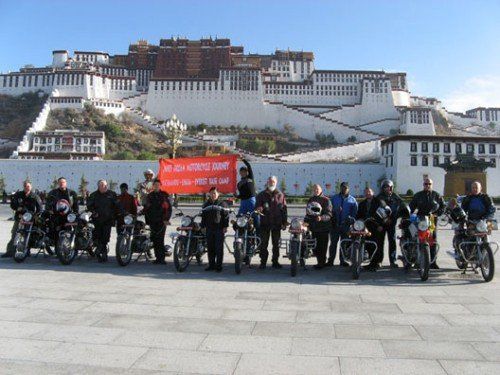
ENFIELDER’S TIBET
“A HISTORIC JOURNEY ON ROYAL ENFIELD MOTORCYCLES”
(Duration: 19 days/18 nights Journey)
This trip is leaving Perth 3rd May 2006 arrives back home 21st May 2006
“A HISTORIC JOURNEY ON ROYAL ENFIELD MOTORCYCLES”
(Duration: 19 days/18 nights Journey)
This trip is leaving Perth 3rd May 2006 arrives back home 21st May 2006
The Royal Enfield 'Bullet' is still manufactured in India with little change in the original 1949-55 design. Despite its primitive looks and very basic mechanical construction, the charm of this bike lies in its low-tech gas-guzzling four-stroke engine. Turn it on, and the air around you reverberates with a low frequency rhythmic rumble. This is the classic heavy-bike-sound of the fifties and sixties, no longer found in today’s hi-tech machines. At a gross dry-weight of 165 kilograms (or more) with engines available either in the 350 cc., or the 500 cc. mold, the Enfield is the only locally manufactured touring bike readily available in South Asia.
In spite of its age, both in design and technology, it is heartening to note today that the Royal Enfield Bullet motorbike has lived on to become a cult machine with a broad fan base all over the world. To be making a journey through the highest passes in the mystical and enchanting land of Tibet on one of these fifties’ classic bikes itself is a life-time experience in itself.
In spite of its age, both in design and technology, it is heartening to note today that the Royal Enfield Bullet motorbike has lived on to become a cult machine with a broad fan base all over the world. To be making a journey through the highest passes in the mystical and enchanting land of Tibet on one of these fifties’ classic bikes itself is a life-time experience in itself.
TIBET- extremely remote and isolated by the most formidable Himalayan ranges is a fascinating world of timeless splendour, unique tradition and breathtaking scenery awaits all travelers to the Roof of the World.
Full name: Tibet Autonomous Region of China
Area: 1.2m.sq.km
Population: 3 million
In Exile: 300,000
Capital city: Lhasa (Population200,000)
People: Tibetan & Chinese
Language: Tibeto Burmese, Tibetan and Chinese
Religion: 90% Buddhist, 1% Muslim, 3% bon, 6% Others
Government: Occupied by China in 1949/1950
Currency: Yuan (Y 8.00 = US$ 1.00)
Geography: Tibet has border with India, Nepal, Sikkim, Bhutan and Burma
Climate: Spring (May to June) – Best weather condition, May to Mid September Winter – (October to April)
What to wear: Light weight clothing is recommended for May to June, Warm garments are required from September to April. An umbrella or a raincoat is a must for the Summer season.
Voltage: Standard voltage only 220 volts.
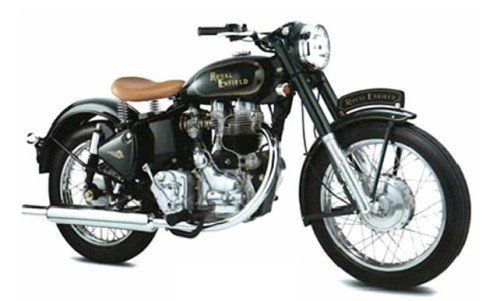
TIBET
“Roof of the World”
TIBET- a sacred land of myths and mysteries inhabited by the ever smiling people, has not only exerted a magnetic pull upon travelers for centuries but also spies, missionaries, scholars, geographers, mystics, soldiers and cranks, etc. Yet, few intrepid, serious and determined have been able to make it.
Tibet was opened to tourism in 1985. Before this, it avoided influence from the West and this country developed its unique culture and religion independently. Since Tibet was governed by the spiritual leaders, monasteries and religious institutions were the backbone of power so the importance and prestige were shown by the size and magnificent architecture of these buildings. Tibetan Buddhism contains many elements of their older religion,” Bon Po” which worshipped the sky, moon, sun, fire, soil and even evil spirits and this is why a monastery such as Tashilhunpo contains thousands of unique statues, paintings (thangka), religious and historical books that to visit in detail would take weeks. The Monasteries are crowded by pilgrims who often travel long distances to fulfill their vows and wishes and their emotions show that religion still holds a very important place in their daily lives.
“Roof of the World”
TIBET- a sacred land of myths and mysteries inhabited by the ever smiling people, has not only exerted a magnetic pull upon travelers for centuries but also spies, missionaries, scholars, geographers, mystics, soldiers and cranks, etc. Yet, few intrepid, serious and determined have been able to make it.
Tibet was opened to tourism in 1985. Before this, it avoided influence from the West and this country developed its unique culture and religion independently. Since Tibet was governed by the spiritual leaders, monasteries and religious institutions were the backbone of power so the importance and prestige were shown by the size and magnificent architecture of these buildings. Tibetan Buddhism contains many elements of their older religion,” Bon Po” which worshipped the sky, moon, sun, fire, soil and even evil spirits and this is why a monastery such as Tashilhunpo contains thousands of unique statues, paintings (thangka), religious and historical books that to visit in detail would take weeks. The Monasteries are crowded by pilgrims who often travel long distances to fulfill their vows and wishes and their emotions show that religion still holds a very important place in their daily lives.
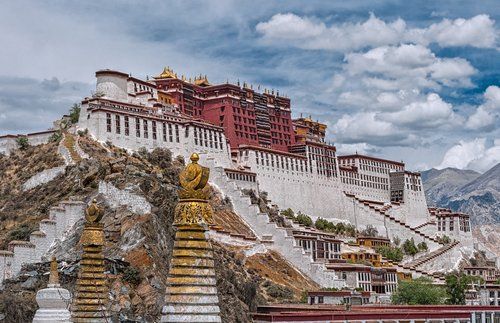
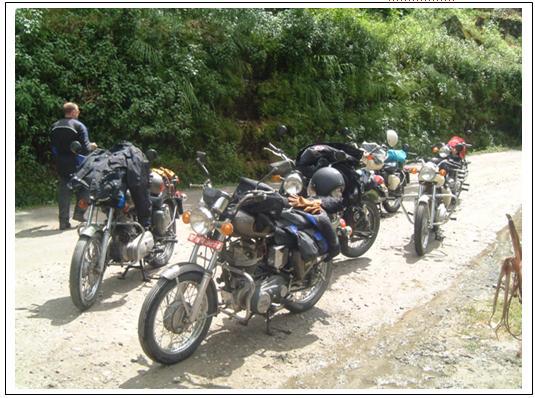
Itinerary
Day 01: Kathmandu (1,300 m) / Zhangmu (2,500 m) 123 Km / Nyalam (3900m).
Early morning 4 ½ hours scenic ride to Kodari (Nepal/Tibet Border) through the beautiful Nepalese countryside. Upon arrival complete Nepali Immigration and start a short walk across the friendship bridge. Meet the waiting motorcycle and drive 8 kilometers to Zhangmu.
Day 01: Kathmandu (1,300 m) / Zhangmu (2,500 m) 123 Km / Nyalam (3900m).
Early morning 4 ½ hours scenic ride to Kodari (Nepal/Tibet Border) through the beautiful Nepalese countryside. Upon arrival complete Nepali Immigration and start a short walk across the friendship bridge. Meet the waiting motorcycle and drive 8 kilometers to Zhangmu.
Zhangmu: Known to Nepali as Khasa, hangs on a cliff face, its boomtown architecture having a temporary look: even the monastery roofs are sheathed in corrugated iron sheets. Complete Chinese Immigration and then ride 90 kilometers (2 hours) to Nyalam situated at an altitude of 3900 m.
Overnight at the Hotel.
Day 02: Acclimatization day in Nyalam.
Overnight at the Hotel.
Day 03: Nyalam / Xegar (4,350m): 244 Km.
Drive to the highest plateau of the world with typical view of the Tibetan landscape offering sheer feeling of standing on the roof of the world crossing over Nyalam Pass (3,800m) and Lalung La (5,050m), weather permitting breathtaking panorama of beautiful Himalayan ranges including Mt. Everest (8,848m) but dwarfed by the vastness of the Tibetan plateau.
Xegar: Also called New Tingri, surrounded by Mountains, is another town that lies in the shadow of a great fortress. Even in ruins it is majestic. Seeming to grow out of the craggy brown rock, its sinuous wall bristles with watchtowers like stegosaurus spines. Isolated in 1855 by marauding Nepalese in search of booty, the Gurkhas cut off the dzong’s water supply and settled in for a long siege. Shegar proper has little to recommend it except the highest post office in China.
We continue past the settlement and head off for another 20 minutes to arrive at the banks of the river for overnight camp.
Overnight at the Camp.
Day 04: Xegar / Xigatse (3,900m) / Nya Village: 214 Km.
Continue scenic ride crossing over Gyatchu La (5,220m), the highest pass en-route to Lhasa from where a road to Mt. Kailash bifurcates to the west towards Lhatse.
Xigatse: Xigatse is the second largest town in Tibet and the capital of Tsang, lying 354km west of Lhasa at an altitude of 3810 m.
Overnight at the Campsite at Nya Village near Xigatse.
Overnight at the Hotel.
Day 02: Acclimatization day in Nyalam.
Overnight at the Hotel.
Day 03: Nyalam / Xegar (4,350m): 244 Km.
Drive to the highest plateau of the world with typical view of the Tibetan landscape offering sheer feeling of standing on the roof of the world crossing over Nyalam Pass (3,800m) and Lalung La (5,050m), weather permitting breathtaking panorama of beautiful Himalayan ranges including Mt. Everest (8,848m) but dwarfed by the vastness of the Tibetan plateau.
Xegar: Also called New Tingri, surrounded by Mountains, is another town that lies in the shadow of a great fortress. Even in ruins it is majestic. Seeming to grow out of the craggy brown rock, its sinuous wall bristles with watchtowers like stegosaurus spines. Isolated in 1855 by marauding Nepalese in search of booty, the Gurkhas cut off the dzong’s water supply and settled in for a long siege. Shegar proper has little to recommend it except the highest post office in China.
We continue past the settlement and head off for another 20 minutes to arrive at the banks of the river for overnight camp.
Overnight at the Camp.
Day 04: Xegar / Xigatse (3,900m) / Nya Village: 214 Km.
Continue scenic ride crossing over Gyatchu La (5,220m), the highest pass en-route to Lhasa from where a road to Mt. Kailash bifurcates to the west towards Lhatse.
Xigatse: Xigatse is the second largest town in Tibet and the capital of Tsang, lying 354km west of Lhasa at an altitude of 3810 m.
Overnight at the Campsite at Nya Village near Xigatse.
Day 05: Nya / Gyantse (3,950m) 120 Km./ Yamdrok Lake (210 Kms)
After breakfast, continue on the main highway and later separate to Gyantse, a rural town between Lhasa and Xigatse about 120 kilometers from Nya Village. It is 264 km Southwest of Lhasa (8 hours drive). It still retains the charm of a traditional Tibetan town untouched by modern expansion. It made world headlines in 1904 when Colonel Young husband, who led British Expedition to Tibet, defeated the Tibetan army there. As a crossroad on the principle trade route to India, it used to be renowned for the excellence of its carpets.
The compound, encircled by an impressive wall, once contained 19 monasteries, presided over by the still intact fortress perched atop a nearby mountain. Here one visits the Kumbum Stupa and Pelkhor Chode Monastery.
Upon arrival, proceed for the sightseeing tour of Gyantse Kumbum, one of the most unique and magnificent buildings in Tibet consisting of 6 storeys complete with a Buddhists Hall and a prayer hall. It has 112 chapels and its walls are adorned with religious paintings. Built in the 15th century, it has withstood all battles and revolutions since.
We also visit the Pelkhor Chode Monastery located near the Khumbum, it was founded in the 15th century. It has been remarkably well preserved and many of the statues and paintings inside it date back to the time of its founding.
After the sightseeing tour and a quick stop for lunch, we set out for Lake Yamdrok passing the Simi La (4200 m) and riding on a trail with fantastic views of the turquoise blue waters of the man made lake caused by the dam. Later we also cross the karo La (5010 m).
Overnight at camp.
Day 06: Ngartsa / Lhasa (3,650m): 161 Km.
The mornings ride along the picturesque trail of the colorful Lake Yamdrok, the Tibetan lifeline river Brahma Putra (Yarlung Tsangpo). Yamdrok Tso or Turquoise Lake: A lake of a glaring blue that radiates a near mystical charm. It is about 240 kms in circumference and is more like an Island sea. There are Yak herders around and the lake itself supports a population of scale less fish in its non-saline waters. It is about 124 kms. from Lhasa.
Later we ascend on a dirt track to Kamba La (4,794m), and have an opportunity to meet the Yak Herders. From here we descend to the main road head but have enough time to spend a leisurely hour for lunch before embarking on the grand finale entrance to the Lhasa City.
After breakfast, continue on the main highway and later separate to Gyantse, a rural town between Lhasa and Xigatse about 120 kilometers from Nya Village. It is 264 km Southwest of Lhasa (8 hours drive). It still retains the charm of a traditional Tibetan town untouched by modern expansion. It made world headlines in 1904 when Colonel Young husband, who led British Expedition to Tibet, defeated the Tibetan army there. As a crossroad on the principle trade route to India, it used to be renowned for the excellence of its carpets.
The compound, encircled by an impressive wall, once contained 19 monasteries, presided over by the still intact fortress perched atop a nearby mountain. Here one visits the Kumbum Stupa and Pelkhor Chode Monastery.
Upon arrival, proceed for the sightseeing tour of Gyantse Kumbum, one of the most unique and magnificent buildings in Tibet consisting of 6 storeys complete with a Buddhists Hall and a prayer hall. It has 112 chapels and its walls are adorned with religious paintings. Built in the 15th century, it has withstood all battles and revolutions since.
We also visit the Pelkhor Chode Monastery located near the Khumbum, it was founded in the 15th century. It has been remarkably well preserved and many of the statues and paintings inside it date back to the time of its founding.
After the sightseeing tour and a quick stop for lunch, we set out for Lake Yamdrok passing the Simi La (4200 m) and riding on a trail with fantastic views of the turquoise blue waters of the man made lake caused by the dam. Later we also cross the karo La (5010 m).
Overnight at camp.
Day 06: Ngartsa / Lhasa (3,650m): 161 Km.
The mornings ride along the picturesque trail of the colorful Lake Yamdrok, the Tibetan lifeline river Brahma Putra (Yarlung Tsangpo). Yamdrok Tso or Turquoise Lake: A lake of a glaring blue that radiates a near mystical charm. It is about 240 kms in circumference and is more like an Island sea. There are Yak herders around and the lake itself supports a population of scale less fish in its non-saline waters. It is about 124 kms. from Lhasa.
Later we ascend on a dirt track to Kamba La (4,794m), and have an opportunity to meet the Yak Herders. From here we descend to the main road head but have enough time to spend a leisurely hour for lunch before embarking on the grand finale entrance to the Lhasa City.
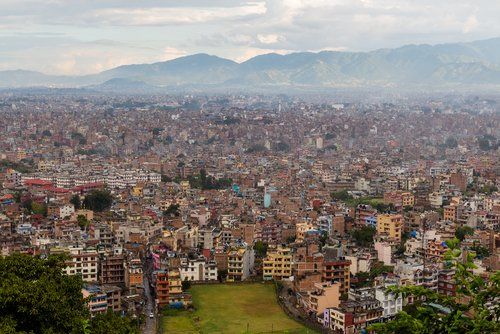
Lhasa
The capital of Tibet at an altitude of 3650 m, is situated on the north bank of the Kyichu River in the province of U (central Tibet). Two high craggy hills stand up in isolation from the valley floor. One, Red Hill, is topped by the Potala Palace and the other, Chockpori or Iron Hill, is crowned by a tall antenna.
Lhasa in Tibetan means "Place of the Gods" and Potala Palace " the residence of the Dalai Lama (the god king), is the earthly representation of the celestial Palace of Avaloketswora, the Buddha of infinite compassion whose incarnation in the human form is believed to be the Dalai Lama. As Tibet’s political, religious and cultural centre it is a city truly blessed by the gods, where life is unhurried, is people jovial and yet remaining staunchly independent.
Lhasa consists of two district parts consisting of different architecture, population and lifestyle. Old Lhasa, the Tibetan section, centres around the Jokhang Temple. Its streets are narrow, between white washed stone houses whose walls slope inward as they rise. Windows are framed in black trapezoids, with protruding fan shaped eaves above. Many houses have brightly painted woodwork.
The Chinese section, was built in the last 30 years around the base of the Potala. It is characterized by straight, broad streets and utilitarian buildings that houses Chinese style department stores and all kinds of government houses. A Revolutionary Museum below the Potala displays the evidence of Chinese wrought economic and social change during the past 30 years.
In spite of it’s forced pace of modernization, Lhasa has not lost it’s soul. It is a friendly city where a Tibetan will always return a smile.
Overnight in Lhasa.
Day 07: Lhasa:
Potala Palace: This legendary palace built atop a single hill is synonymous with Tibet. First foremost king, Songtsen Gompo, it was expanded to its present structure during the 17th century by the 5th Dalai Lama. This 13 storey, 1000 room citadel served as the headquarters of the former "church-state" of Tibet and was home to successive Dalai Lama who, from the latter half of the 18th century, used it as their Winter Palace.
Jokhang Temple: Situated in the heart of old Lhasa, it houses Tibet’s most precious religious relic, a golden Shankyamuni Buddha which was brought as a gift by the Chinese Princess Wen Cheng on the occasion of her wedding to the Tibetan King, Songtsen Gompo. Surrounding the Jokhang Temple is the bustling Barkhor market place, which is the religious and social focus of Lhasa. This, the spiritual centre of Tibet, is also the heart of Lhasa.
Overnight in Lhasa.
The capital of Tibet at an altitude of 3650 m, is situated on the north bank of the Kyichu River in the province of U (central Tibet). Two high craggy hills stand up in isolation from the valley floor. One, Red Hill, is topped by the Potala Palace and the other, Chockpori or Iron Hill, is crowned by a tall antenna.
Lhasa in Tibetan means "Place of the Gods" and Potala Palace " the residence of the Dalai Lama (the god king), is the earthly representation of the celestial Palace of Avaloketswora, the Buddha of infinite compassion whose incarnation in the human form is believed to be the Dalai Lama. As Tibet’s political, religious and cultural centre it is a city truly blessed by the gods, where life is unhurried, is people jovial and yet remaining staunchly independent.
Lhasa consists of two district parts consisting of different architecture, population and lifestyle. Old Lhasa, the Tibetan section, centres around the Jokhang Temple. Its streets are narrow, between white washed stone houses whose walls slope inward as they rise. Windows are framed in black trapezoids, with protruding fan shaped eaves above. Many houses have brightly painted woodwork.
The Chinese section, was built in the last 30 years around the base of the Potala. It is characterized by straight, broad streets and utilitarian buildings that houses Chinese style department stores and all kinds of government houses. A Revolutionary Museum below the Potala displays the evidence of Chinese wrought economic and social change during the past 30 years.
In spite of it’s forced pace of modernization, Lhasa has not lost it’s soul. It is a friendly city where a Tibetan will always return a smile.
Overnight in Lhasa.
Day 07: Lhasa:
Potala Palace: This legendary palace built atop a single hill is synonymous with Tibet. First foremost king, Songtsen Gompo, it was expanded to its present structure during the 17th century by the 5th Dalai Lama. This 13 storey, 1000 room citadel served as the headquarters of the former "church-state" of Tibet and was home to successive Dalai Lama who, from the latter half of the 18th century, used it as their Winter Palace.
Jokhang Temple: Situated in the heart of old Lhasa, it houses Tibet’s most precious religious relic, a golden Shankyamuni Buddha which was brought as a gift by the Chinese Princess Wen Cheng on the occasion of her wedding to the Tibetan King, Songtsen Gompo. Surrounding the Jokhang Temple is the bustling Barkhor market place, which is the religious and social focus of Lhasa. This, the spiritual centre of Tibet, is also the heart of Lhasa.
Overnight in Lhasa.
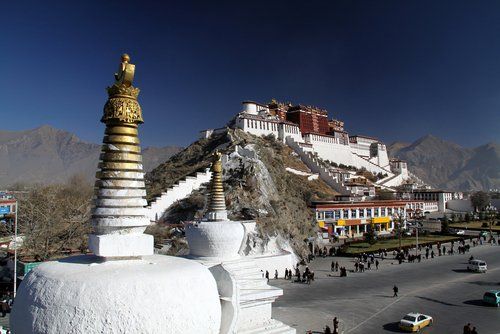
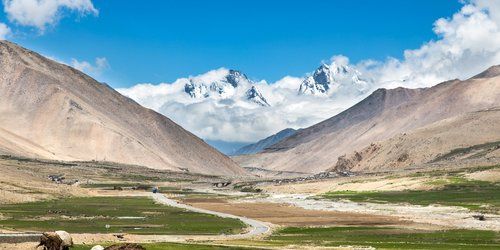
Day 08: Full day sightseeing tour of Lhasa including the Drepung Monastery
AM : Drepung Monastery lies 8km west of Lhasa. It said to be the largest monastery in the world housing over 10,000 monks, it was founded in 1416 by the disciple of Te Tsonkhapa, founder of the Yellow Hat Gelukpa sect of Tibetan Buddhism. The second, third and the fourth Dalai Lamas lived and were entombed here. Drepung in Tibetan means ‘Richmound’.
PM : Sera Monastery lies 5 kms (3 miles) north of Lhasa. Sera setting is one of Lhasa’s prettiest. Once a community of more than 5,000 monks, it was a virtually extinguished by the Chinese. The restored monastery sits below the brow of hill on which Tsongkhapa built a hermitage and spent several years meditating. One of the monks’ disciples began building Sera in 1419, completing it a few years later.
Overnight at the Hotel.
Day 09: DRIVE FROM LHASA / DUCK FARM BEFORE XIGATSE
After the grueling ride over the pass to get to Lhasa, the trail today on tarred road is a pleasant and enjoyable one. The ride takes about 6 – 7 hours as we follow the Yarlung Tsangpo river and scenery of irrigation fields, yak hair skin boats, a typical scene of Tibet. Because of the unavailability of Camping spots around Xigatse we stop about an hour before arriving Xigatse in a beautiful location to camp beside a small lake and a duck farm.
Xigatse – A Granary of Tibet
Xigatse is a famous cultural city with a history of more than 500 years. Some 3,800m above sea level, it has been a place in which panchen lamas of various historical stages were authenticated. Later it has become a political and religious center in rear Tibet. To its south stands the world known Qomolangma Peak. Around the city there are the Sakya, Palkor and Shalu monasteries.
O/N Camping.
Day 10: DUCK FARM / XIGATSE / HOT SPRINGS (3,900m): 190 Km.
After an early breakfast set out for Xigatse and proceed for the sightseeing tour of the Panchen Lama’s Tashilhunpo Monastery. Founded in 1447 by Gendun Drup, the first Dalai Lama. It is the seat of the Panchen Lama who is second to the Dalai Lama in Tibetan Buddhist Hierarchy. The 5th Dalai Lama in declared that his teacher, then the Abbot of Tashilhunpo, who a manifestation of the Buddha Amitabha and the Pancen Rinpochhe. Tashilhunpo has one of the world’s largest status - a 9 storeyed gilded bronze statue of Maitriya, the future Buddha. After the sightseeing tour, we set out of Xigatse and stop for lunch at a convenient place. Later, continue the scenic ride as we cross over Gyatchu La (5,220m), the highest pass en-route to Lhasa and arrive at Lhatse, from where a road to Mt. Kailash bifurcates to the west. We continue further and camp beside a natural hot spring.
Overnight at Camp.
Day 11: HOT SPRINGS / XEGAR / EVEREST BASE CAMP (140 KMS)
From the Hot Springs we ride to Xegar. Xegar, also called New Tingri, surrounded by Mountains, is another town that lies in the shadow of a great fortress. Even in ruins, it is majestic. Seeming to grow out of the craggy brown rock, it’s sinuous wall bristles with watchtowers like stegosaurus spines. Isolated in 1855 by marauding Nepalese in search of booty, the Gurkhas cut off the dzong’s water supply and settled in for a long siege. Xegar proper has little to recommend, except the highest post office in China.
We purchase our entry tickets for the clients, staff as well as the vehicles for the entry in Mt. Everest Region and head off to the Check point. While everyone congregates, we stop at the restaurant for a quick lunch.
After lunch, we set out for the 4 hour ride to the Rongbuk Monastery in the Everest Base Camp area and camp near Rumjong / Ronbuk monastery.
Day 11: HOT SPRINGS / XEGAR / EVEREST BASE CAMP (140 KMS)
From the Hot Springs we ride to Xegar. Xegar, also called New Tingri, surrounded by Mountains, is another town that lies in the shadow of a great fortress. Even in ruins, it is majestic. Seeming to grow out of the craggy brown rock, it’s sinuous wall bristles with watchtowers like stegosaurus spines. Isolated in 1855 by marauding Nepalese in search of booty, the Gurkhas cut off the dzong’s water supply and settled in for a long siege. Xegar proper has little to recommend, except the highest post office in China.
We purchase our entry tickets for the clients, staff as well as the vehicles for the entry in Mt. Everest Region and head off to the Check point. While everyone congregates, we stop at the restaurant for a quick lunch.
After lunch, we set out for the 4 hour ride to the Rongbuk Monastery in the Everest Base Camp area and camp near Rumjong / Ronbuk monastery.
Overnight at Camp.
Day 12: EXCURSION AROUND MT. EVEREST BASE CAMP
Follow the dirt road south; the Dzakar Chu, now much reduced in volume, is on your right. Soon the valley broadens and the road leaves the river to continue its ascent on the other side, swerving to avoid a rockslide. At the base of the slide is chorten; at its top are the ruins of the Samdrupo Nunnery (a small chapel has been rebuilt). The Everest Base Camp is just beyond some moraine hills. The rest of the afternoon is free to explore this area and is possible to take a couple of short excursions beyond the Base Camp.
One is to climb the moraines of the Central Rongbuk Glacier, immediately south of the camp, to some small glacier pools. The other is to trek to the Qianjing glacier. Head up a small canyon east of the Base Camp to a rough track that crosses a vast lateral moraine 200 m above camp. Follow this south on a relatively level platform high above the Central Rongphuk Glacier. At the end of the moraine is the Qianjing Glacier; about 4 hours walk from the Base Camp. To the south are the fine views of the Everest North Face. Later return to Camp.
Dinner and Overnight at camp.
Day 13: EVEREST BASE CAMP / XEGAR
Ride from Everest base Camp to Xegar following the same winding route to return. (Note : in case of good road conditions, one can retrace to New Tingri via another route which totally by passes Tingri).
Overnight at Camp.
Day 14: XEGAR (4,350m) / NYALAM: 200 Km.
Full day ride mostly downhill from the highest plateau of the world with typical view of the Tibetan landscape offering sheer feeling of standing on the roof of the world crossing over Nyalam Pass (3,800m) and Lalung La (5,050m), weather permitting breathtaking panorama of beautiful Himalayan ranges including Mt. Everest (8,848m) but dwarfed by the vastness of the Tibetan plateau. We arrive at a familiar setting, the booming town of Nyalam.
Dinner and Overnight at Camp.
From the Hot Springs we ride to Xegar. Xegar, also called New Tingri, surrounded by Mountains, is another town that lies in the shadow of a great fortress. Even in ruins, it is majestic. Seeming to grow out of the craggy brown rock, it’s sinuous wall bristles with watchtowers like stegosaurus spines. Isolated in 1855 by marauding Nepalese in search of booty, the Gurkhas cut off the dzong’s water supply and settled in for a long siege. Xegar proper has little to recommend, except the highest post office in China.
We purchase our entry tickets for the clients, staff as well as the vehicles for the entry in Mt. Everest Region and head off to the Check point. While everyone congregates, we stop at the restaurant for a quick lunch.
After lunch, we set out for the 4 hour ride to the Rongbuk Monastery in the Everest Base Camp area and camp near Rumjong / Ronbuk monastery.
Overnight at Camp.
Day 12: EXCURSION AROUND MT. EVEREST BASE CAMP
Follow the dirt road south; the Dzakar Chu, now much reduced in volume, is on your right. Soon the valley broadens and the road leaves the river to continue its ascent on the other side, swerving to avoid a rockslide. At the base of the slide is chorten; at its top are the ruins of the Samdrupo Nunnery (a small chapel has been rebuilt). The Everest Base Camp is just beyond some moraine hills. The rest of the afternoon is free to explore this area and is possible to take a couple of short excursions beyond the Base Camp.
One is to climb the moraines of the Central Rongbuk Glacier, immediately south of the camp, to some small glacier pools. The other is to trek to the Qianjing glacier. Head up a small canyon east of the Base Camp to a rough track that crosses a vast lateral moraine 200 m above camp. Follow this south on a relatively level platform high above the Central Rongphuk Glacier. At the end of the moraine is the Qianjing Glacier; about 4 hours walk from the Base Camp. To the south are the fine views of the Everest North Face. Later return to Camp.
Dinner and Overnight at camp.
Day 13: EVEREST BASE CAMP / XEGAR
Ride from Everest base Camp to Xegar following the same winding route to return. (Note : in case of good road conditions, one can retrace to New Tingri via another route which totally by passes Tingri).
Overnight at Camp.
Day 14: XEGAR (4,350m) / NYALAM: 200 Km.
Full day ride mostly downhill from the highest plateau of the world with typical view of the Tibetan landscape offering sheer feeling of standing on the roof of the world crossing over Nyalam Pass (3,800m) and Lalung La (5,050m), weather permitting breathtaking panorama of beautiful Himalayan ranges including Mt. Everest (8,848m) but dwarfed by the vastness of the Tibetan plateau. We arrive at a familiar setting, the booming town of Nyalam.
Dinner and Overnight at Camp.
Day 15: After breakfast, drive to Zhangmu (40 kilometers) / Kathmandu (128 Km.) .Complete the Chinese Immigration and border formalities. The permits and Motorcycles are checked once again and then we ride down to Kodari and the Nepal Tibet Friendship Bridge. Here the porters will transfer the luggage to the Nepal side and we bid farewell to our Guide and drivers from Tibet.
Cross the friendship bridge, complete Nepal Customs and Immigration and drive 128 Km. (4 hours) to Kathmandu.
** End of Arrangements **
Cost for The Royal Enfield Tibet Ride
(Duration : 19 days/18 nights – Kathmandu to Kathmandu)
THE COST PER PERSON ON TWIN SHARING BASIS WILL BE AUD$5,950.00
THE SINGLE ROOM SUPPLEMENT WILL BE AUD$320.00
PLUS RETURN AIRFARES, TAXES, TRAVEL INSURANCE, (approx AUD$1,900.00 - 1,950.00….to be confirmed)
THE COST INCLUDES:
Transfer from International airport / Hotel / Airport in a private car, accompanied by an English speaking representative.
3 nights stay on twin sharing basis at a 3 star Hotel in Kathmandu with breakast.
Welcome dinner
Visa Fee for Tibet and documentation
Transportation of camping equipments, trek staff, food and spare parts from Kathmandu / Kodari in a mini bus.
Support of One Japanese Made Land cruiser inside Tibet only (kodari / Lhasa / Kodari)
Support of 1 truck from Kodari / Lhasa / Kodari
All necessary travel permits to Lhasa and Everest Base Camp.
One good Tibetan English speaking guide with all sightseeing as per the itinerary.
2 nights stay at the Nyalam Guest House in Nyalam on room only basis but meals will be provided by Nepali trek staff.
3 nights Hotel accommodation at the Hotel Dhood Ghu in Lhasa on twin sharing basis and with breakfast only
All monastery entrance fee as per the itinerary.
Permit for Motorcycles
Cost of fuel for Motorcycles
Camping arrangements in 2 man A or dome tents with foam mats, dining and toilet tents, all meals (breakfast + lunch + tea + Dinner) supported by well experienced Trek staff from Nepal
Transportation of Trek staff, camping Equipments, and spare parts from Kodari / Kathmandu.
Lunch on the Kathmandu / Kodari / Kathmandu drives at a local restaurant.
Poterages at the Kodari border to transfer the equipments and spare parts from Nepal side to Tibet side and vice versa pre and post Tibet Tour.
Farewell dinner.
The cost excludes:
Refundable Deposit for Motorcycles at the Zhangmu border.
Nepal entry & and re-entry visa fee.
Personal insurance and evacuation.
Sleeping bags and thermo-rest (for better insulation)
Items of a personal nature such as bar bills, alcoholic beverages, bottled drinks and mineral water, extra mileage, personal gratuities such as tips to guides, drivers and trek staff
Items not mentioned in the cost includes
Costs incurred due to natural calamities, strikes, break downs and beyond the control of Epic Journeys Nepal (P) LTD and its associates.
*Vaccinations are recommended when travelling to third world countries.
*Payment by credit card may attract surcharge
*Dates for flights may vary, but will be confirmed as the trip gets closer...as at 1/10/05, we will be leaving Perth Wed 3rd May, and arriving back Sunday 21st May 2006.
Cross the friendship bridge, complete Nepal Customs and Immigration and drive 128 Km. (4 hours) to Kathmandu.
** End of Arrangements **
Cost for The Royal Enfield Tibet Ride
(Duration : 19 days/18 nights – Kathmandu to Kathmandu)
THE COST PER PERSON ON TWIN SHARING BASIS WILL BE AUD$5,950.00
THE SINGLE ROOM SUPPLEMENT WILL BE AUD$320.00
PLUS RETURN AIRFARES, TAXES, TRAVEL INSURANCE, (approx AUD$1,900.00 - 1,950.00….to be confirmed)
THE COST INCLUDES:
Transfer from International airport / Hotel / Airport in a private car, accompanied by an English speaking representative.
3 nights stay on twin sharing basis at a 3 star Hotel in Kathmandu with breakast.
Welcome dinner
Visa Fee for Tibet and documentation
Transportation of camping equipments, trek staff, food and spare parts from Kathmandu / Kodari in a mini bus.
Support of One Japanese Made Land cruiser inside Tibet only (kodari / Lhasa / Kodari)
Support of 1 truck from Kodari / Lhasa / Kodari
All necessary travel permits to Lhasa and Everest Base Camp.
One good Tibetan English speaking guide with all sightseeing as per the itinerary.
2 nights stay at the Nyalam Guest House in Nyalam on room only basis but meals will be provided by Nepali trek staff.
3 nights Hotel accommodation at the Hotel Dhood Ghu in Lhasa on twin sharing basis and with breakfast only
All monastery entrance fee as per the itinerary.
Permit for Motorcycles
Cost of fuel for Motorcycles
Camping arrangements in 2 man A or dome tents with foam mats, dining and toilet tents, all meals (breakfast + lunch + tea + Dinner) supported by well experienced Trek staff from Nepal
Transportation of Trek staff, camping Equipments, and spare parts from Kodari / Kathmandu.
Lunch on the Kathmandu / Kodari / Kathmandu drives at a local restaurant.
Poterages at the Kodari border to transfer the equipments and spare parts from Nepal side to Tibet side and vice versa pre and post Tibet Tour.
Farewell dinner.
The cost excludes:
Refundable Deposit for Motorcycles at the Zhangmu border.
Nepal entry & and re-entry visa fee.
Personal insurance and evacuation.
Sleeping bags and thermo-rest (for better insulation)
Items of a personal nature such as bar bills, alcoholic beverages, bottled drinks and mineral water, extra mileage, personal gratuities such as tips to guides, drivers and trek staff
Items not mentioned in the cost includes
Costs incurred due to natural calamities, strikes, break downs and beyond the control of Epic Journeys Nepal (P) LTD and its associates.
*Vaccinations are recommended when travelling to third world countries.
*Payment by credit card may attract surcharge
*Dates for flights may vary, but will be confirmed as the trip gets closer...as at 1/10/05, we will be leaving Perth Wed 3rd May, and arriving back Sunday 21st May 2006.
